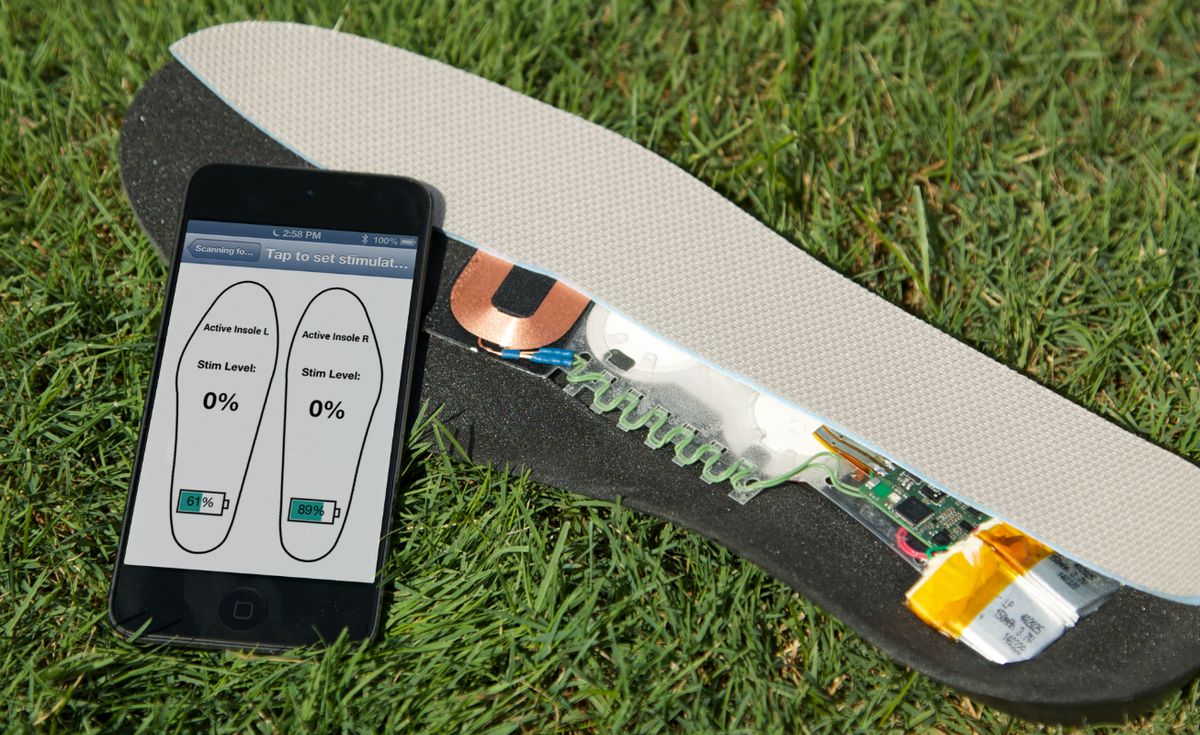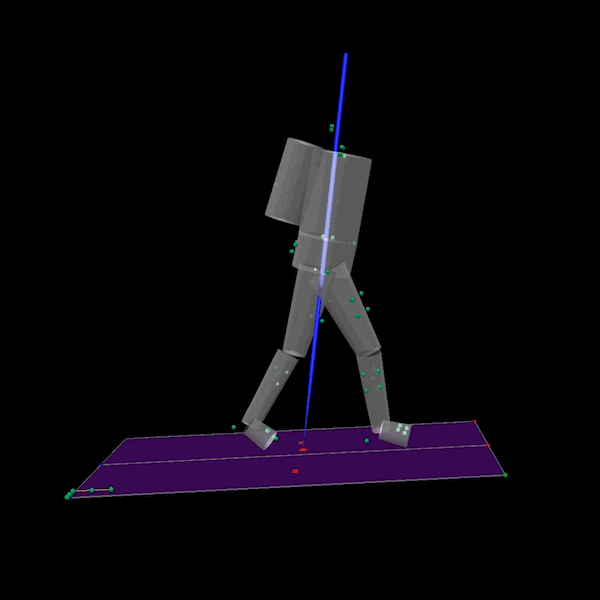
Insoles That Buzz Your Feet Could Improve Balance

Insoles that electrically stimulate the feet with random vibrations that are too gentle to feel can affect a person's stride, and may boost stability, offering a potential new way to decrease the risk of falls and injury from balance loss, a new study finds.
Study participants undergoing strenuous activity while wearing such insoles adjusted their strides in a way that typically improves balance, the research found. The study was published online in the May 2016 issue of the journal Medicine & Science in Sports & Exercise.
The insoles work using a process called "stochastic resonance" (SR), a method for amplifying a weak signal by adding "white noise" across a spectrum of frequencies. The vibrations produced by the insoles may be imperceptible, but they provide a type of signal upgrade to the sensitivity of the user's sole, which translates into enhanced performance while walking. [7 Common Exercise Errors and How to Fix Them]
Earlier studies explored how this technique might be used to improve balance in elderly people. It's not surprising that such studies took place, said Daniel Miranda, the lead author of the new study and a Technology Development Fellow at the Wyss Institute at Harvard University in Massachusetts.
"Somebody who's 65 or 70 [years old] who's generally healthy may have some sensory deficits due to the natural aging process," Miranda told Live Science. It made sense that studies would investigate how this technology could help older people with decreased sensitivity recover some of what they had lost.
But, Miranda and his colleagues wondered, might there also be applications for young people?
Step right up
In the years since the first experiments with this technique, the technology had progressed so that the actuators and sensors could be installed inside a thin, flexible insole made of traditional insole materials, which could fit comfortably inside a shoe. This meant the effects of SR could be tested during more dynamic activities than before, the researchers in the new study said.
Sign up for the Live Science daily newsletter now
Get the world’s most fascinating discoveries delivered straight to your inbox.
The scientists examined subjects walking up an incline on a treadmill, and applied SR vibration through the insoles at different times during the task: before the people reached their maximum effort, during the peak of exertion and after they admitted fatigue. This was done to see what effect the stimulation might have on the participants' performance.

Since the pulses were too gentle to feel, walkers wearing the insoles had no way of knowing when they were receiving the vibrations, allowing the scientists to be certain that subjects were not consciously changing the way they walked.
The researchers found that whenever they activated the insoles, there was a 10 percent improvement in a gait mechanism called step-width variability, which is related to balance. Varying step width, Miranda explained, improves stability while walking.
Using the insoles to increase sensation for a more stable gait could be especially beneficial when fatigue reduces normal sensitivity to stimuli — for both recreational and professional athletes, he said.
And better balance, Miranda added, could keep people from getting hurt.
"Improving the balance-control mechanism has the potential to translate to reducing injury or risk of injury, but those studies still need to be done," he said.
Follow Mindy Weisberger on Twitter and Google+. Follow us @livescience, Facebook & Google+. Original article on Live Science.

Mindy Weisberger is an editor at Scholastic and a former Live Science channel editor and senior writer. She has reported on general science, covering climate change, paleontology, biology and space. Mindy studied film at Columbia University; prior to Live Science she produced, wrote and directed media for the American Museum of Natural History in New York City. Her videos about dinosaurs, astrophysics, biodiversity and evolution appear in museums and science centers worldwide, earning awards such as the CINE Golden Eagle and the Communicator Award of Excellence. Her writing has also appeared in Scientific American, The Washington Post and How It Works Magazine. Her book "Rise of the Zombie Bugs: The Surprising Science of Parasitic Mind Control" will be published in spring 2025 by Johns Hopkins University Press.


